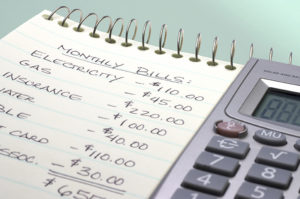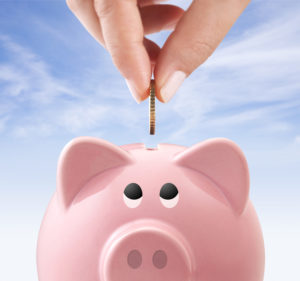Budgeting to Achieve Financial Stability
Learn how to make a household budget that helps you save money and avoid debt.
A good personal budget gives you the foundation you need to build a healthy financial outlook. Budgeting is essential if you want to avoid overspending that leads to credit card debt. It also helps you save money effectively to achieve your financial goals. This guide is designed to help you build an effective household budget, so you can balance your income with your expenses. It also offers some helpful tips on financial planning for key life events, so you can maintain stability long-term.
If you’re having trouble managing credit card debt, we can help. Talk to a trained credit counsellor to find solution that will work for you.
Budgeting basics

The goal of any budget is to balance your monthly expenses with your income, so you can avoid overspending. This starts by totalling up what you make each month and what you spend. Although you may think that you can keep everything organized in your head, it’s important to write things down to get a detailed picture of where your finances really are.
Totalling up your income
Monthly income can include more than what you receive from your paycheques. It can also include other sources of income, such as child or spousal support, money from a side business, freelance work, government benefits, public assistance, and (ideally) investment income.
This free worksheet can help you total up your monthly income »
Understanding your monthly expenses
Personal expenses fall into three groups:
- Fixed
- Flexible
- Discretionary
Fixed expenses
This type of expense refers to any necessary cost that has a set monthly payment. This includes:
- mortgage or rent payments
- real estate taxes
- auto loan payments
- student loan payments
- insurance payments
Flexible expenses
These expenses also cover necessities, but they have no set cost. Flexible expenses include bills that vary in cost from month-to-month, as well as expenses for other necessities. This includes:
- hydro/gas/oil bills
- electricity bills
- phone/internet/cellular bills
- groceries
- gas and other transportation costs
- household supplies
- self-care products and toiletries
- pet expenses
- medical expenses
For flexible expenses like bills, you may want to look at your annual bills and choose the highest amount to ensure you can cover that expense every month. For expenses like groceries and transportation costs, you can set a spending target by taking an average of what you spent over the past three months. Then, you work to stay below that target each month.
Discretionary expenses
These refer to your “wants.” It’s anything that’s a nice-to-have in your budget that’s not a necessity. This includes:

- entertainment expenses
- clothing
- dining out / take out
- gifts
- tithing and donations
- subscriptions
Use our free expense worksheet to total up your expenses »
Where does credit card debt fit in?
Credit cards are revolving debt, which means the required monthly payment changes as your balance increases and decreases. This generally means that credit card bills count as a flexible expense, since the amount you pay may vary based on how much you charge in any given month.
However, if you owe have multiple balances that you’re working to pay off, you may decide to implement a debt reduction plan. In this case, you determine how much you can afford to pay towards your balances each month and then set that as a fixed cost. In this case, credit card bills become a fixed expense.
Use our free credit card debt worksheet to take stock of your debt »
Where does savings fit in?
A common mistake that people make is to leave savings for whatever money they have left at the end of the month. However, this is a good way to ensure you never save anything. Unexpected expenses always arise, so if you really want to save money, you need to factor it into your budget.
A better way of ensuring that you save money consistently is to treat savings like a fixed expense. You look at your income and expenses to determine how much you can afford to save each month. Then you set that amount as fixed expense in your budget. You essentially treat your savings like a bill you pay yourself.

Balancing your budget step-by-step
- Use our free worksheets to total up your income, expenses, and credit card debt.
- Subtract your total monthly expenses from your income.
- If you bring in more than you spend, then determine how much you want to set aside each month for savings; set this as a fixed expense in your budget.
- If you spend more than you earn, you need to identify ways to cut back.
- Look at your discretionary expenses first:
- Can you limit your media, TV, movie or music streaming services?
- Can you scale back dining out and cook more at home instead?
- Do you have magazine subscriptions you can cancel?
- Are there services, like cleaning or landscaping, that you can cancel and do yourself?
- Also consider how to scale back on flexible expenses:
- Can you cut features from your cellular plan?
- Are you overspending on groceries, household supplies or pet supplies?
- Have you looked at ways to save on home energy costs or car costs?
What does a balanced budget look like?
A balanced budget doesn’t mean that you break even. If you spend everything you earn, it means you’re living paycheque-to-paycheque, which is extremely risky. Instead, you want to give yourself some breathing room. Ideally, you should spend no more than 75 per cent of what earn each month. The remaining 25 per cent is known as free cash flow.
It’s important to note that free cash flow is separate from savings. Your savings is treated like a fixed expense as we describe above. By contrast, free cash flow is the money you use to cover all those unexpected expenses that inevitably arise.
Evaluating your budget and making adjustments
Once you set your budget, you can’t just forget it! Instead, you need to regularly check back to make sure your spending falls in line with the targets you set. If it doesn’t, then you may need to review your budget to find places you can cut back.
You should also revisit your budget anytime there’s a change in your financial situation. This includes adjusting your budget if your salary increases or decreases, as well as if you have a new expense. If you get a new pet, you need to increase your monthly pet expenses. If you add a steaming service, add it to your budget.
Finally, you want to review your budget once per year to make sure it’s still balanced to help you achieve your goals. Some people choose to do this at the beginning of the year as they’re setting goals for the New Year. Others choose to do their annual review in fall after their children head back to school and before the expenses of the winter holidays. Find a time of the year that fits your lifestyle and goals, then commit to reviewing your budget at the same time every year.
Do you have the right money mindset?
One thing to consider about as you start budgeting and taking control of your finances is how you think about money. Your attitudes about budgeting, saving, debt and daily money management have a big impact on your ability to achieve financial success. Learn how your perspective affects your finances and what you can do to make sure you have the right mindset to achieve the success you want.




